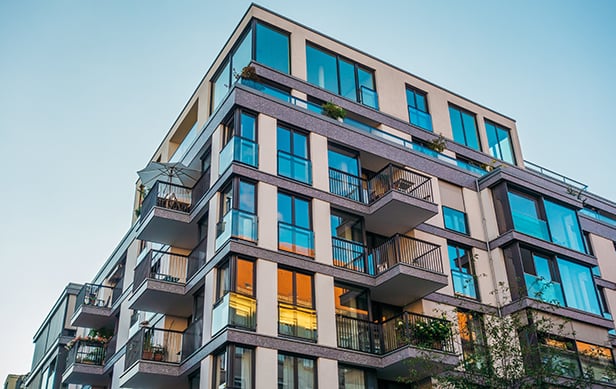GlobeSt.com: Talk about the events in the days leading up to Katrina. Where does the fault lie?
Olivier: Louisiana was well prepared and the media has misrepresented that fact. Those of us who live in coastal areas have experienced storms many times. This particular storm was unprecedented, and it was followed almost four weeks later by Rita. But in advance of the storm, we encouraged more than one million people to leave the city and the surrounding area. Don't forget we're talking about a 10-parish region. We did this with contra-flow, which means we turned all traffic north for a series of hours to ensure that people could leave, and we augmented that exodus with the necessary service vehicles to provide gas and fix flat tires. The evacuation started Saturday before the storm. The media has missed that.
GlobeSt.com: Is there anything else you feel the media missed?
Olivier: Yes. They missed the fact that Governor Kathleen Blanco had requested assistance from the federal government on Friday. Of all the states, Louisiana has the largest number of National Guardsmen stationed in Afghanistan and Iraq, and the equipment is there as well. We knew we needed military assistance even to drive the school buses that the governor had commandeered for people who didn't have transportation. We couldn't find enough people to drive the school buses.
GlobeSt.com: What does all of this tell you?
Olivier: That we need to learn better how to deal better with catastrophic disasters. We didn't learn what needed to be learned from 9/11 and we didn't learn from Florida when they experienced four hurricanes in two years.
GlobeSt.com: Yet you say that Louisiana was well-prepared. How do you reconcile your two statements?
Olivier: We did the things we thought were necessary in normal times and normal events. We were able to evacuate people and accomplish all of the things we would normally do. A storm comes in and goes away and two or three days later we're back at work.
GlobeSt.com: How has the region progressed in the months since the hurricane?
Olivier: Let me lay some ground work. First, 211,000 homes were destroyed. Remember, we had floodwaters that existed until Oct. 17 and it devastated more residential than commercial areas. I don't know the number of apartments, but I do know it was substantial. There's relatively little sign of damage today in the French Quarter, but eight blocks away I can show you a waterline that was six feet high.
GlobeSt.com: To what extent is the Downtown area back?
Olivier: It's probably around 70% back. We've got about 26,000 hotel rooms in operation.
GlobeSt.com: Mardi Gras is particularly important this year, isn't it?
Olivier: It's an important attraction and important to the revenue base. But it's important to tell people that New Orleans in back in business.
GlobeSt.com: How quickly is the residential component coming back?
Olivier: It's slowly coming back, depending obviously on the magnitude of the damage and if homeowners have resolved their insurance claims. But there's one other element causing a slowdown--and that's the Army Corp. of Engineers. We need to know at what elevation the reconstruction will have to occur and we haven't gotten that determination yet. Without that, you can't get flood insurance and so you can't get a mortgage.
GlobeSt.com: One of the odd things about disasters of this magnitude--and it was true of 9/11 as well--is the opportunity it creates. What's the outlook?
Olivier: We had a lot of damage. We lost more than 300,000 automobiles in New Orleans and 1.5 million appliances. The federal government is giving us some assistance. Is it enough? No. But here is where the opportunity exists. Imagine what that is doing for Lowe's and Home Depot. Sears is having the best quarter they've had in a decade, because people have to replace everything. The same is true of building materials and jobs coming in for contractors and laborers.
GlobeSt.com: But with no homes, isn't the permanent workforce decimated?
Olivier: In New Orleans proper, we're down 30% of the population. But we're seeing a huge influx of workers for the contract work I mentioned. We also know that 90,000 more automobiles are traveling on I-10-beween Baton Rouge and New Orleans. That tells us that people have found housing within that 75-mile radius. Do we need more housing? Absolutely. Do we need it quickly? Absolutely.
Interestingly, the same can be said for the office stock. Here in Baton Rouge, you can't find class A office space. You're lucky if you can find class C space here. The same is true in cities around the state, areas that have absorbed displaced businesses and people.
GlobeSt.com: You mentioned government incentives. What's the total allocation?
Olivier: It's about $53 billion in all four states that qualify. There are two features of the packages that make them extraordinary. There's a 50% bonus depreciation and there are Gulf Opportunity Bonds, tax exempt private activity bonds. Both of which were offered to Manhattan after 9/11--the bonds were Liberty Bonds.
With the bonus depreciation, if you spend $10 million renovating an apartment complex, next year you can take $5 million off the income-tax liability. This is huge. But there's only a 36-month window. You have until December 2008 to rebuild or build anew and the asset has to be operational in that time.
GlobeSt.com: It's a very small window.
Olivier: But it's structured for a fast ignition of the recovery.
GlobeSt.com: And what about the opportunity bonds?
Olivier: We have an allocation of $7.9 billion. They're like revenue bonds, which heretofore were available only for manufacturing and distribution. But the uses here are far and wide. You can't build a golf course or a casino. Everything else seems to be allowable. Plus, while the revenue bonds had a $10-million cap, there's none on these.
GlobeSt.com: Has anyone taken you up on the incentives yet?
Olivier: There are people waiting for IRS clarification on projects relative to the use of the bonus depreciation, investors who are building an apartment complex or a condominium. But it's early. The program is only four weeks old. Over time, we expect that it will cause a significant amount of condo development. In addition, for some of the big-box retailers with properties that have aged, this is an opportunity to rebuild.
© Touchpoint Markets, All Rights Reserved. Request academic re-use from www.copyright.com. All other uses, submit a request to [email protected]. For more inforrmation visit Asset & Logo Licensing.







